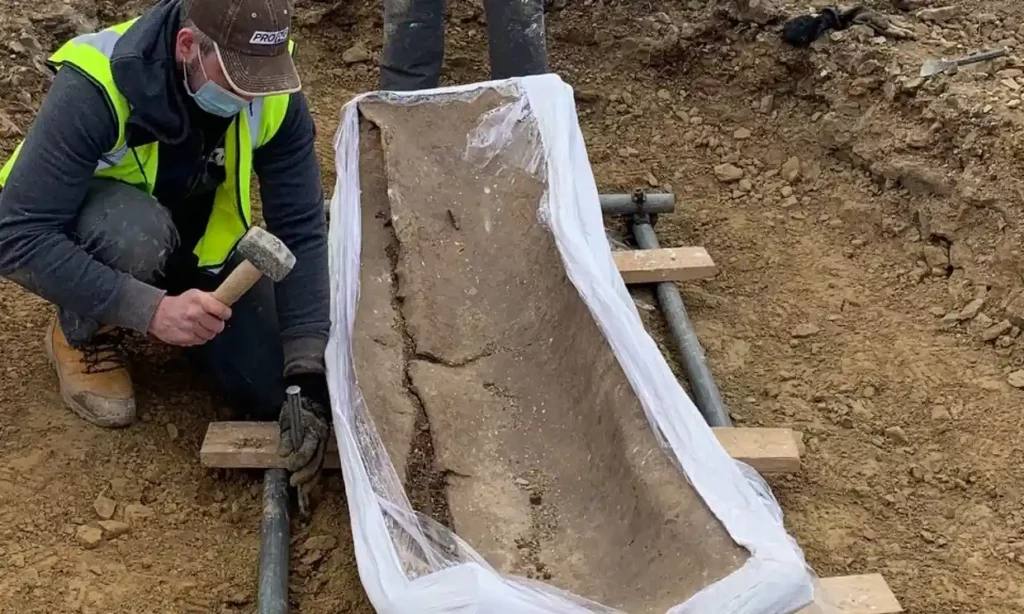Roman Lead Coffin Unearthed in Northern England

Skeletal remains of a Roman aristocrat have been unearthed in a “truly extraordinary” hidden cemetery dating back 1,600 years. Bones belonging to the high-status woman were discovered in an ancient lead coffin during a dig in the town of Garforth, near Leeds.
Archaeologists said the “once in a lifetime” find could help unlock secrets of a period spanning from the fall of the Roman empire in AD400 to the beginnings of the Anglo-Saxon era.
David Hunter, the principal archaeologist with West Yorkshire Joint Services, said: “This has the potential to be a find of massive significance for what we understand about the development of ancient Britain and Yorkshire.”
Unusually for an ancient cemetery, the remains found in Garforth belonged to people from the late Roman and the early Saxon eras. The skeleton of the late Roman aristocratic woman was found alongside the remains of 60 men, women and children from the two periods.
Archaeologists traced the burial traditions of both cultures in the cemetery, the precise location of which is being kept secret.

Hunter said: “The presence of two communities using the same burial site is highly unusual and whether their use of this graveyard overlapped or not will determine just how significant the find is.
“When seen together the burials indicate the complexity and precariousness of life during what was a dynamic period in Yorkshire’s history. The lead coffin itself is extremely rare, so this has been a truly extraordinary dig.”
Experts will seek to establish precise timeframes for the burials by carbon dating the remains. Chemical tests will be carried out to try to determine how they lived and what they ate, as well as details about their ancestry.
Leeds city council said the discovery was made last spring but could only be revealed now because of the need to keep the site safe while tests were carried out.
Although the exact location remains a secret, the excavation was in part prompted by a discovery nearby of late Roman stone buildings and a small number of Anglo-Saxon-style structures.
Kylie Buxton, the on-site supervisor for the excavations, said it was every archaeologist’s dream to work on such a project, adding: “There is always a chance of finding burials, but to have discovered a cemetery of such significance, at such a time of transition, was quite unbelievable.
“For me, it was a particular honour to excavate the high-status lead coffin burial, but it was a great team effort by everyone involved.”
Early analysis indicates some of those in the cemetery held early Christian beliefs, and Saxons were accompanied by personal possessions such as knives and pottery.
The council said it hoped the coffin would be displayed in an upcoming exhibition at Leeds City Museum exploring death and burial customs from across the world.
